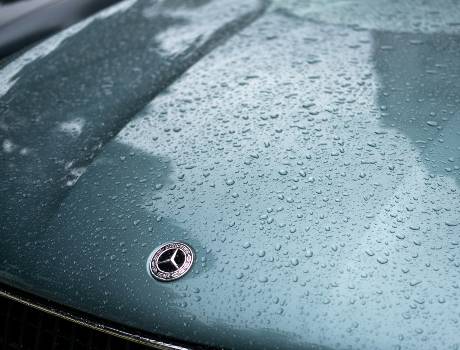Dent repair is a critical aspect of maintaining the aesthetic and structural integrity of a vehicle. Whether caused by minor accidents, hailstorms, or stray shopping carts, dents can negatively impact a car’s appearance and resale value. While many vehicle owners understand the importance of addressing dents promptly, fewer realize how environmental factors like weather play a significant role in the success of repair techniques.
Cold weather, in particular, presents unique challenges and considerations for dent repair professionals and vehicle owners alike. From the contraction of metal to the brittleness of paint, winter conditions can complicate the repair process, necessitating specialized tools, techniques, and precautions. This article explores how cold weather affects dent repair and offers practical advice for achieving optimal results during the chilly months. Read our Guide 8 Reasons Why Winter is the Perfect Time for Paintless Dent Repair (PDR).
Cold weather affects paintless dent repair (PDR) by making the metal panels of a car less malleable. Cold temperatures cause the metal to contract and harden, making it more challenging to manipulate the dent back to its original shape without risking cracks in the paint. Additionally, freezing conditions can make the adhesive used in some PDR methods less effective, potentially prolonging the repair process. Proper temperature regulation is essential for successful dent repair during colder months.

Table of Contents – How Cold Weather Affects Dent Repair
Understanding Dent Repair
What is Dent Repair?
Dent repair refers to the process of restoring a vehicle’s body to its original shape after damage. There are two primary types of dent repair: Paintless Dent Repair (PDR) and traditional dent repair.
Types of Dent Repair
- Paintless Dent Repair (PDR):
- Involves reshaping the metal back to its original form without damaging the paint.
- Ideal for minor dents caused by hail or minor collisions.
- Cost-effective and time-saving.
- Traditional Dent Repair:
- Includes sanding, filling, and repainting the damaged area.
- Suitable for deeper dents or scratches that compromise the paint.
Tools and Materials in Dent Repair
Common tools include:
- Dent pullers and hammers.
- Heat guns and infrared lamps.
- Adhesives and fillers for traditional repairs.
Role of Temperature in Dent Repair
The Science of Temperature’s Impact
Temperature directly affects the physical properties of materials used in vehicles. In cold weather:
- Metal contracts, making it harder to manipulate.
- Paint becomes brittle, increasing the risk of cracking or chipping.
Ideal Temperature for Dent Repair
The optimal temperature range for dent repair is typically between 65°F and 75°F. Below this range, repairs become more challenging due to material rigidity.

Cold Weather Challenges in Dent Repair
Metal Contraction and Repair Complexity
In cold conditions, metal becomes less pliable, requiring more force and precision to reshape. This can lead to:
- Increased time spent on repairs.
- Higher risk of causing additional damage.
What is the Impact of Winter on Car Dents?
Winter can make car dents harder to repair due to metal contraction in cold temperatures, which affects dent removal techniques. Freezing weather can also increase the risk of paint damage and rust, complicating the repair process further.
Paint Brittleness
Low temperatures make vehicle paint susceptible to cracking or flaking during the repair process. Special care must be taken to avoid exacerbating existing damage.
Paintless Dent Repair (PDR) in Cold Weather
Challenges of PDR in Winter
PDR relies on the flexibility of metal and paint. Cold weather reduces this flexibility, making it difficult to achieve seamless results without applying heat.
Adjustments for Winter PDR
Technicians often use heat guns or infrared lamps to warm the metal and surrounding paint, restoring pliability before beginning the repair.
Traditional Dent Repair in Cold Weather

Risks with Traditional Methods
Cold weather complicates traditional dent repair processes such as sanding and painting. Paint applied in low temperatures may:
- Fail to adhere properly.
- Develop cracks or bubbles over time.
Solutions for Winter Repairs
Professionals use:
- Heated workspaces.
- Specialized materials formulated for cold-weather application.
Tools and Techniques Adapted for Cold Weather
Essential Winter Tools
- Heat Guns: Used to warm the repair area.
- Infrared Lamps: Provide consistent heat without damaging the paint.
Innovations in Materials
Modern adhesives and fillers are designed to maintain flexibility and effectiveness even in cold environments.
Environmental Considerations
Indoor vs. Outdoor Repairs
- Indoor Repairs: Provide a controlled environment, ensuring consistent temperatures and better results.
- Outdoor Repairs: Require portable heaters and additional precautions to combat temperature fluctuations.
Vehicle Owners’ Role in Winter Dent Repair
Preparing Your Vehicle
Before a repair appointment:
- Remove snow and ice from the vehicle.
- Warm up the car in a garage if possible.
DIY Repair Myths
While tempting, DIY dent repair in winter can lead to:
- Further damage to paint or metal.
- Incomplete repairs requiring professional intervention.
Preventative Measures Against Winter Dents
Common Causes
- Snow and ice falling from rooftops.
- Sliding on icy roads leading to minor collisions.
Prevention Tips
- Park in covered or sheltered areas.
- Use car covers designed for winter conditions.
Case Studies: Cold Weather Dent Repair Success Stories
Real-Life Examples
Example 1: A hail-damaged vehicle repaired using heated PDR techniques, restoring it to factory condition despite sub-zero temperatures.
Example 2: A deep dent successfully repaired indoors using advanced cold-weather adhesives.
Steps to Take to Protect Your Car During the Winter
Winter weather can be harsh on vehicles, but taking proactive steps can help protect your car from damage and ensure it stays in good condition throughout the season.
Start by regularly washing your car to remove road salt, which can cause corrosion to the paint and undercarriage.
Apply a high-quality wax or sealant to provide an extra layer of protection against snow, ice, and salt. Use all-weather floor mats to keep the interior clean from slush and debris.
Ensure your tires are properly inflated and consider switching to winter tires for better traction on icy roads.
Parking in a garage or using a car cover can shield your vehicle from falling ice, snow, and freezing temperatures.
Invest in de-icer for your windshield and door locks to prevent freezing, and keep a winter emergency kit in your car for added safety.
These simple steps can help prevent unnecessary damage and keep your car running smoothly all winter long.
4 Reasons To Get Your Dent Repaired in Winter
Winter might not seem like the ideal time for vehicle maintenance, but it’s actually one of the best times to address dents and dings on your car. One key reason is that delaying repairs can lead to bigger issues. Studies show that paint damage caused by dents can result in rust within six months, particularly in winter when road salt and moisture accelerate corrosion. Fixing a dent promptly during the winter prevents rust from spreading and protects your car’s resale value. Moreover, many auto repair shops report that up to 30% of annual repairs are conducted during winter months, highlighting the demand for winter repairs and the expertise available during this time.
Another reason to prioritize winter dent repair is safety. Data reveals that 44% of accidents involving vehicle damage occur during winter months due to icy roads and poor visibility. Dents near headlights, taillights, or sensors can impair their functionality, posing a safety risk in already hazardous conditions. Additionally, tackling repairs in the off-peak winter months often means shorter wait times and potentially lower costs, as shops are less busy compared to the spring and summer rush. Addressing dents now not only ensures your vehicle looks great but also helps maintain its safety and structural integrity during the harshest season.
Frequently Asked Questions -How Cold Weather Affects Dent Repair
Can Dent Repair Be Done Outdoors in Winter?
Yes, but it requires portable heating tools to ensure the repair area is sufficiently warmed.
Is Winter Dent Repair More Expensive?
Cold weather repairs may cost slightly more due to additional tools and time required.
Conclusion Cold Weather Affects Dent Repair
Cold weather adds complexity to dent repair, but with the right tools, techniques, and professional expertise, excellent results are achievable. For vehicle owners, understanding these challenges and partnering with experienced technicians can make all the difference. Don’t let winter weather delay your dent repair needs—embrace the season with confidence knowing your vehicle can be restored effectively, no matter the temperature.
Contact Us – Cold Weather Affects Dent Repair
Contact us at Pro-Tech Auto Shield & Nano Coatings, we’re dedicated to protecting your vehicle with the highest quality services and cutting-edge nano coating solutions. Whether you need expert paint protection, ceramic coatings, or automotive shield services, we’re here to help.
📞 Call Us Today: (303) 423-2841
📍 Visit Us: Our team is ready to assist you with professional care and personalized attention.
Don’t hesitate to reach out—your car deserves the best protection!








WHAT OUR CLIENTS ARE SAYING